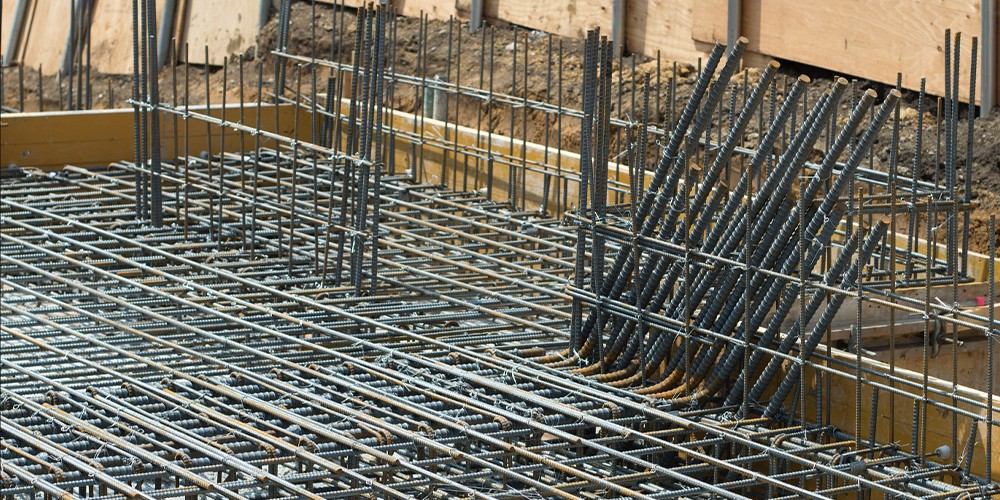close
Choose Your Site
Global
Social Media
Views: 0 Author: Site Editor Publish Time: 2025-06-20 Origin: Site








In the world of construction, particularly in reinforced concrete (RC) structures, the term “stirrups” comes up frequently. But what exactly are stirrups, and why are they so essential in modern building practices?
This article explores the purpose, types, applications, and importance of stirrups in construction. Understanding how stirrups work is important for anyone in construction. It can also help you decide if automation is the right choice for your project.
Stirrups are steel loops used in concrete structures like beams and columns to hold the main reinforcement bars in place and resist shear forces. Engineers usually form stirrups into rectangular, square, circular, or helical loops and tie them around the main reinforcement bars.
Their main job is to stop shear forces and keep the main bars in place, preventing structural problems like:
• Shear cracks in beams
• Buckling of vertical bars in columns
• Displacement of reinforcement during concrete pouring
Stirrups perform several critical roles in RC structures:
Concrete is strong in compression but weak in shear. Stirrups reinforce the beam to resist diagonal tension cracks, especially near the supports.
They keep the main reinforcement bars fixed during concrete placement, ensuring dimensional accuracy and load-bearing capacity.
Stirrups in columns hold the concrete core together, making it stronger and safer, especially during earthquakes.
Stirrups hold the bars together and help spread the load, which reduces cracks and makes the structure safer and last longer.
Depending on the structural needs, stirrups come in various shapes and configurations:
| Type of Stirrup | Description & Use Case |
|---|---|
| Rectangular/Square | Common in beams; simple and effective |
| Circular/Spiral | Used in round columns or piers |
| Four-/Six-Legged | For large columns with many bars |
| Helical | Offers high ductility in seismic zones |
| Diamond/Inclined | Designed to optimize shear resistance |
| Open Stirrup (U-shaped) | Used in special anchoring cases |
Design and spacing depend on engineering codes such as IS 456 or ACI 315. Typical spacing is tighter near supports and looser at mid-span.
Traditionally, stirrups were hand-bent on-site using manual tools, which was time-consuming, inconsistent, and labor-intensive. Today, construction professionals rely increasingly on automatic stirrup bending machines.

Besides beams and columns, engineers also use stirrups in footings, pile caps, lintels, and shear walls to control shear stress and provide support. For example, in bridge construction, stirrups are critical for managing torsion and resisting lateral forces. In tall buildings, well-spaced stirrups keep the structure strong across floors, especially in areas with earthquakes.
If your business frequently works with reinforced concrete, selecting the right stirrup bending machine can drastically change your productivity. Look for machines that offer:
✔️ Support for various stirrup shapes and custom angles
✔️ Programmable interface for repeat jobs
✔️ Compatibility with your preferred bar sizes (typically 6mm–12mm)
✔️ Reliable after-sales support and spare parts
Contractors everywhere trust our machines because they work well and last long. They are great for large-scale projects and rebar yards.
We make automatic rebar bending machines that help builders and factories work faster, more accurately, and safer. Here's how our machine benefits your operation:
• Perfect repeatability for all stirrup shapes
• ⏱️ 5x faster than manual fabrication
• Handles multiple bar diameters with automatic adjustment
• Minimizes labor cost and operator fatigue
• Ideal for large-volume production
➡️ If your project includes extensive stirrup work, automation is no longer optional—it’s essential.
Understanding what stirrups are and how they contribute to structural integrity helps you design better and build smarter. Whether you’re building tall towers, bridges, or homes, stirrups are the hidden key to keeping concrete strong and safe.
For large-scale projects, upgrading to modern stirrup fabrication methods is essential.
Looking to automate your stirrup production?
Contact us today for a demo or quote.